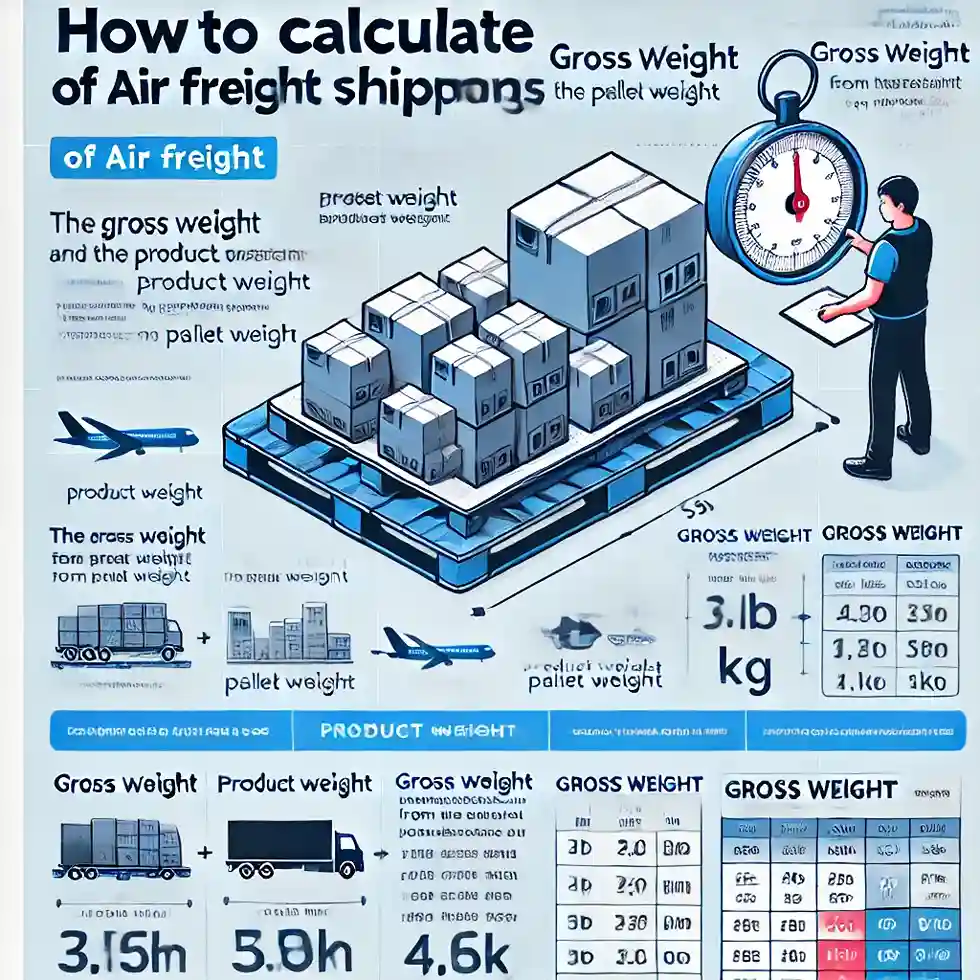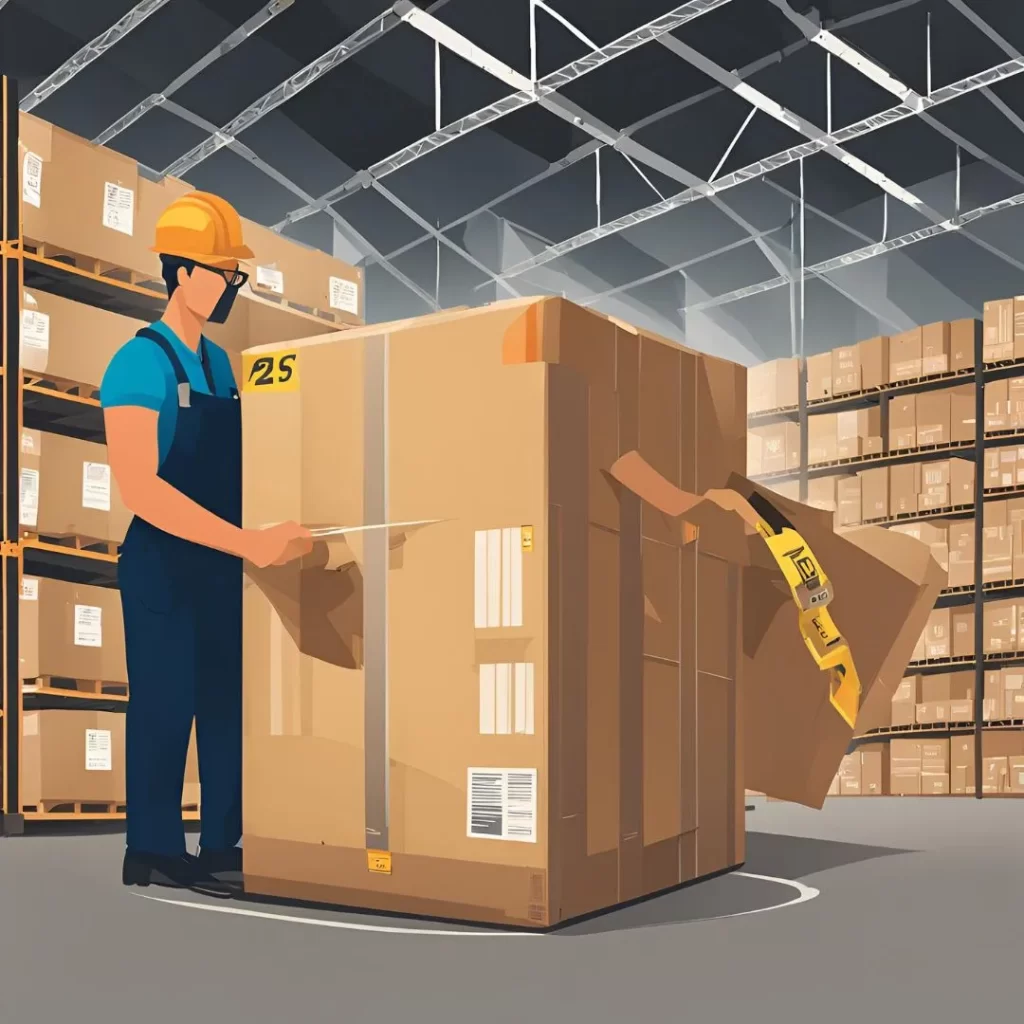When shipping goods by air, knowing how to calculate air freight volume weight is essential, as it directly affects your shipping costs.
Air freight volume weight, or dimensional weight, helps airlines account for the space your package occupies in relation to its actual weight.
This is particularly important for large but lightweight shipments that take up significant space in the cargo hold. In such cases, airlines charge based on the package’s volume, not just its weight.

Why Volume Weight Matters in Air Freight
You might wonder why airlines bother with volume weight at all. The reason is simple: space on an aircraft is limited, and carriers want to maximize the amount of cargo they can transport. If an airline charged only by actual weight, bulky but light shipments would occupy valuable cargo space without generating sufficient revenue.
By using volume weight, airlines ensure that they’re compensated fairly for large, light packages.
Understanding Dimensional Weight vs. Actual Weight
When shipping via air freight. Actual weight refers to the physical weight of the package, measured in kilograms or pounds, and is straightforward to determine. However, dimensional weight takes into account the volume or size of the package, which is measured using a specific formula.
This formula is used by airlines to assess how much space the package will occupy in the cargo hold. It is important to note that airlines generally compare the actual weight and the dimensional weight, charging for whichever is greater.
This ensures that large, lightweight packages don’t take up valuable space without contributing to the cost in proportion to their size. Understanding this difference can help businesses optimize their packaging and avoid unexpected shipping costs, leading to more efficient and cost-effective air freight solutions.
How to Calculate Air Freight Volume Weight
Calculating air freight volume weight might seem confusing at first, but it’s actually simple once you understand the process. Start by measuring your package’s dimensions—length, width, and height—in centimeters.
Let’s say your package measures 100 cm in length, 50 cm in width, and 40 cm in height. Multiply these dimensions (100 x 50 x 40), and you’ll get a total volume of 200,000 cubic centimeters. Next, divide this number by the standard conversion factor of 6,000.
In this case, the volume weight would be 33.3 kg. Airlines use this method to price bulky but lightweight packages fairly according to the space they occupy in the aircraft’s cargo hold.

The Standard Formula for Calculating Volume Weight
The standard formula for calculating air freight volume weight is simple and widely used across the industry. To find the volume weight, multiply the length, width, and height of your package (in centimeters), then divide the total by 6,000. The formula looks like this:
Volume Weight = (Length × Width × Height) / 6,000
The divisor, 6,000, represents the balance airlines strike between space and weight. It’s critical to measure dimensions accurately to avoid errors. Remember, airlines will charge based on either volume or actual weight, whichever is greater, so getting this calculation right ensures you avoid unnecessary costs.
Real-Life Example of Calculating Air Freight Volume Weight
Let’s walk through an example to make things clear. Suppose you have a box that measures 50 cm in length, 40 cm in width, and 30 cm in height. The actual weight of the box is 10 kg, but you need to calculate its volume weight.
First, multiply the dimensions:
50 × 40 × 30 = 60,000
Now, divide the total by 6,000:
60,000 / 6,000 = 10 kg (volume weight)
In this case, the actual weight and the volume weight are the same. However, if the box were larger and lighter, the volume weight might exceed the actual weight, and the airline would charge based on the volume weight.
Common Mistakes to Avoid When Calculating Volume Weight
When calculating air freight volume weight, several common mistakes can lead to costly errors. One major issue is using the wrong unit of measurement. Always make sure you measure dimensions in centimeters; if you’re converting from inches, double-check your calculations.
Another frequent mistake is applying an incorrect divisor, such as 5,000 instead of the standard 6,000. This can result in inaccurate volume weight calculations, affecting your shipping costs. Taking the time to verify these details can save you money and ensure smooth shipping processes. Remember, accurate calculations are key to avoiding surprises in your air freight expenses!
How Airlines Use Volume Weight for Pricing
Airlines don’t simply consider the actual weight of a package; they also evaluate its volume to determine shipping costs. They apply a pricing method that uses whichever is greater: volume weight or actual weight.
This approach is crucial for ensuring that larger, bulkier items don’t escape proper charges for the space they occupy in the cargo hold. Understanding how airlines calculate air freight charges can empower you to better estimate your shipping expenses, helping you avoid surprises when it comes time to pay.

Read also : Air Freight Import and Export Procedures
When Should You Use Volume Weight vs. Actual Weight?
You might be asking yourself, “When should I use volume weight, and when is actual weight more applicable?” The answer is straightforward. If your shipment is large but lightweight, like a box of pillows, you’ll typically rely on volume weight for pricing. Conversely, if your package is compact yet heavy, such as a box of metal parts, the actual weight will usually dictate the shipping costs.
Understanding this distinction can help you avoid unexpected charges and ensure that you’re paying the right amount for your shipment. Always consider the size and weight of your items to determine the most cost-effective approach for your air freight.
Tools to Help You Calculate Air Freight Volume Weight
When it comes to figuring out how to calculate air freight volume weight, you’re in luck—there are plenty of online tools and shipping calculators that make this task a breeze. Instead of doing the math yourself, these handy calculators let you input your package’s dimensions and automatically determine the volume weight for you.
This can save you time and reduce the chance of errors. Many of these tools are user-friendly and accessible on various shipping websites, so you can easily ensure you’re getting accurate calculations without the hassle. With just a few clicks, you’ll have the information you need to make informed shipping decisions.
How to Optimize Your Air Freight Shipping Costs
Now that you know how air freight volume weight is calculated, you can optimize your shipping costs. One way to do this is by reducing the volume of your packages. If you can pack items more tightly, you’ll reduce the volume weight and save on shipping. Avoid unnecessary packaging that inflates the dimensions of your shipment.
The Role of Volume Weight in International Shipping
The role of air freight volume weight is especially significant in international shipping, where every inch of cargo space counts. When you’re sending goods overseas, you’ll frequently encounter charges based on volume weight, which applies to bulky items that take up more room than their actual weight suggests.
Knowing how to calculate air freight volume weight can help you avoid unexpected costs and ensure you budget accurately for shipping expenses. By understanding this concept, you can make informed decisions about packaging and shipping methods, ultimately saving money and optimizing your logistics process.
How Different Airlines Apply Volume Weight Rules
Although the 6,000 divisor is standard, some airlines may use different conversion factors or rules depending on the destination or type of aircraft. Always check with your carrier to confirm how they calculate volume weight and ensure you’re using the right formula.
Final Thoughts on Calculating Air Freight Volume Weight
In conclusion, understanding how to calculate air freight volume weight is vital for anyone involved in shipping logistics. Getting this calculation right can significantly impact your shipping costs and help you avoid unexpected fees. By familiarizing yourself with the formula, knowing when to apply volume weight, and steering clear of common pitfalls, you’ll navigate air freight shipping with greater confidence.
Remember to double-check your calculations and consult with your carrier for the most accurate guidelines. This proactive approach not only saves money but also ensures your shipments are handled efficiently.
Why Choose TD International Shipping for Your Freight Needs
At TD International Shipping, we specialize in all modes of shipping Air Freight , Ocean Freight and land Transportation service to meet your shipping needs. Our experienced team is dedicated to providing efficient and reliable logistics solutions tailored to your specific requirements.
Whether you’re looking to ship small packages or large cargo, we’ve got you covered. We understand the complexities of freight forwarding and strive to make the process seamless and cost-effective for you. Don’t hesitate to reach out! For personalized service and expert advice, call us or send a WhatsApp message today.
Let us help you navigate the world of shipping with confidence!
Frequently Asked Questions About Air Freight Volume Weight
-
- What happens if the actual weight is more than the volume weight?
If the actual weight exceeds the volume weight, airlines will charge based on the actual weight. - Do all airlines use the same formula?
While the 6,000 divisor is common, some airlines may use slightly different methods. Always confirm with your specific carrier. - Can I reduce the volume weight?
Yes, by packing items more efficiently or using smaller packaging.
- What happens if the actual weight is more than the volume weight?


